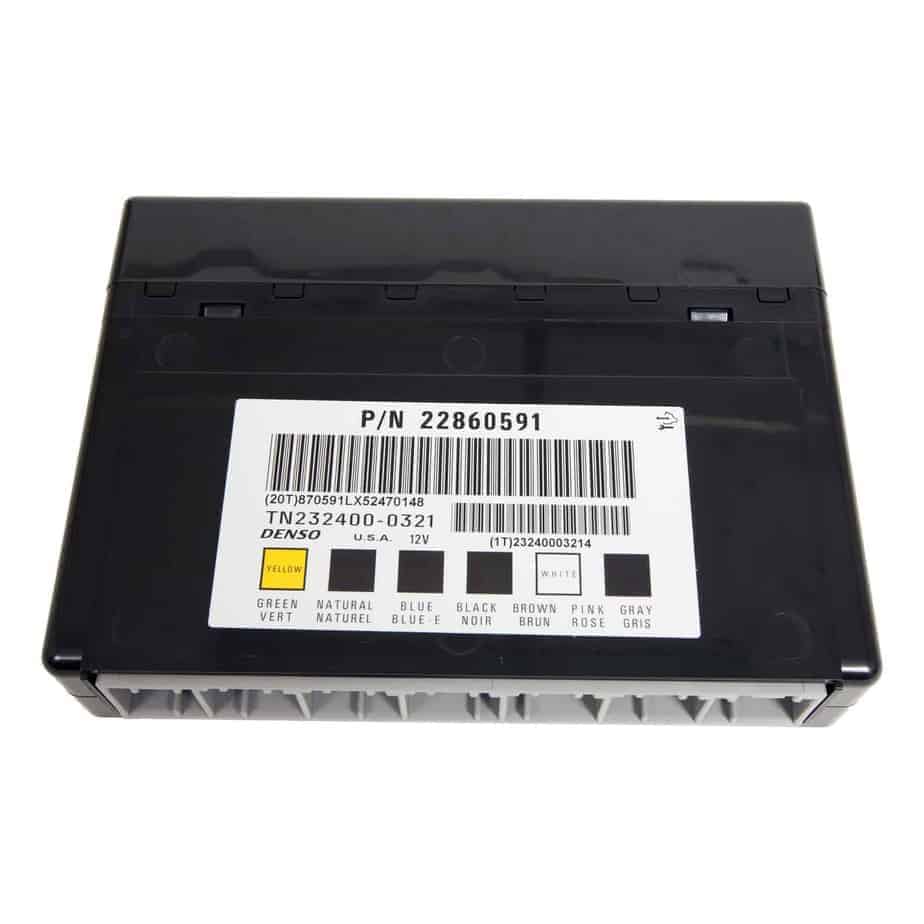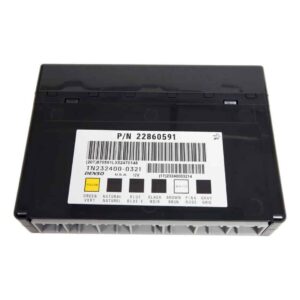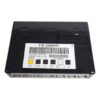Restore Full Functionality to Your GM Vehicle
Are you chasing down electrical gremlins in your 2010 Chevy Tahoe? Flickering interior lights, power windows with a mind of their own, or a security light that prevents your truck from starting are all classic signs of a failing Body Control Module (BCM). The BCM is the central command center for your vehicle’s body electronics, and when it fails, it can cause a cascade of frustrating and unpredictable problems. This isn’t just an annoyance; it can affect vehicle security and safety. Stop throwing parts at the problem and get the definitive solution.
This replacement Body Control Module is the reliable, cost-effective fix you’ve been looking for. We take the guesswork and hassle out of the repair by pre-programming the module to your vehicle’s specific VIN. This means it arrives at your door with the latest GM software updates already installed, ready for a straightforward installation. You get a part that communicates perfectly with your truck’s other systems, restoring the functions you depend on every day.
Case Study: A Tricky Diagnosis
I remember a 2010 Yukon XL that came into my shop with a complaint that stumped two other mechanics. The battery would be dead every other morning, but it tested perfectly fine. The owner had already replaced the alternator. After hooking up my scanner, I noticed the BCM wasn’t letting certain accessory circuits go to ‘sleep’ after the key was off, causing a parasitic drain. We swapped in a VIN-programmed BCM, and the problem was solved instantly. These modules control dozens of functions, and a small internal fault can create massive headaches.
Common Signs of a Failing BCM
If you’re experiencing any of the following, a faulty BCM is the likely culprit. In my 20+ years of experience, these are the most frequent symptoms I’ve seen tied to BCM failure on these GM platforms.
- ✔ Intermittent or non-working power windows, door locks, or mirrors.
- ✔ Dashboard lights flickering or behaving erratically.
- ✔ The security or anti-theft light stays on, often causing a no-start condition.
- ✔ Horn honking unexpectedly or not working at all.
- ✔ Interior dome lights staying on or not turning on.
- ✔ Communication error codes, such as U0140, U0155, or other ‘U’ codes, indicating a loss of communication with the BCM.
- ✔ Problems with the HVAC (heating and air conditioning) controls.
A Straightforward Guide to Installation
Installing your new 2010 Tahoe Body Control Module is a manageable job for a confident DIYer. Our pre-programming service eliminates the need for expensive dealer-only tools for the initial setup.
- Safety First: Always disconnect the negative terminal from your vehicle’s battery and wait 10-15 minutes to allow all systems to power down completely.
- Locate the BCM: On most GMT900 trucks like the Tahoe, Yukon, and Suburban, the BCM is located under the driver’s side of the dashboard, to the left of the steering column. You may need to remove a lower dash panel for access.
- Disconnect and Remove: Carefully unplug the electrical connectors from the old module. They have locking tabs that need to be depressed. Once disconnected, unbolt or unclip the old BCM from its mounting bracket.
- Install the New Module: Mount your new, pre-programmed BCM in the same location and securely reconnect all the electrical harnesses. Ensure they click into place.
- Reconnect and Test: Reinstall any trim panels you removed. Reconnect the negative battery terminal. Turn the key to the ‘On’ position (without starting) and test your lights, locks, and windows to confirm functionality.
Important Post-Installation Steps
While our programming handles the primary setup, some vehicle systems may require a ‘handshake’ with the new BCM. Please be aware of the following potential procedures:
- Airbag System Sync: If your airbag warning light is illuminated after installation, a professional scan tool is needed to perform the ‘Setup SDM Primary Key in BCM’ procedure. This syncs the airbag system with the new BCM and is only required if the light is on.
- Brake Pedal Position Relearn: On some models, a brake pedal position sensor relearn may be necessary to ensure correct brake light operation and to satisfy the traction control system.
Disclaimer: Procedures can vary. We always recommend consulting a factory service manual or a certified technician if you are unsure about any step.
Will This Fit My Vehicle?
This module is a direct replacement for a wide range of General Motors vehicles and interchanges with numerous part numbers. Please verify your original part number against our list below or confirm your vehicle is listed. This unit replaces part numbers: 10382479, 15093910, 15276271, 15299986, 15819552, 15828601, 15837419, 15872388, 15872421, 15880684, 15921352, 15921353, 15948438, 15948439, 20815898, 20839063, 20864767, 20864768, 20921435, 20921436, 20935349, 22860591, 25826124, 25826125, 25847588, 25847589, 25892622, 25910474, 25934762, 25934763, 95151084.
Fits select models including: Acadia, Avalanche, Caprice, Captiva Sport, CTS, DTS, Enclave, Equinox, Escalade, Express/Savana Vans, G8, Hummer H2, Impala, Lucerne, Monte Carlo, Outlook, SRX, STS, Suburban, Tahoe, Torrent, Traverse, Vue, and Yukon.
Frequently Asked Questions
What does ‘VIN Programmed’ mean?
It means we load the module with your vehicle’s specific software using your 17-digit Vehicle Identification Number (VIN). This ensures the BCM works correctly with the options your truck was built with, saving you a costly trip to the dealership for programming.
Is this a difficult part to replace myself?
For someone with basic mechanical skills, this is a very manageable repair. The primary challenge is typically accessing the module under the dashboard. Our pre-programming service handles the most complex, software-related part of the job.
Do I need to send my old BCM back?
No. There is no core charge for this part. You can keep your original module.
Will this fix my ‘Service StabiliTrak’ message?
A failing BCM can sometimes trigger traction or StabiliTrak warnings due to lost communication or bad sensor data (like the brake pedal position). While it can be the cause, these warnings can also stem from other issues like wheel speed sensors. A full diagnostic scan is the best way to confirm the source.
Why do I need to provide my VIN?
Your VIN is essential for us to load the correct GM software and settings for your vehicle’s specific configuration (e.g., power seats, sunroof, specific lighting). This makes the installation process as smooth as possible.



